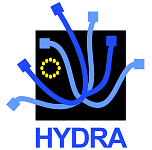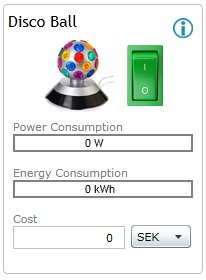- 17 Jun 2007
- Project information
- 31027 Reads
The Hydra objective: Middleware for networked embedded system
The first objective of the Hydra project is to develop middleware based on a Service-oriented Architecture, to which the underlying communication layer is transparent. The middleware will include support for distributed as well as centralised architectures, security and trust, reflective properties and model-driven development of applications.
 The
HYDRA middleware will be deployable on both new and existing networks of distributed
wireless and wired devices, which operate with limited resources in terms of
computing power, energy and memory usage. It will allow for secure, trustworthy,
and fault tolerant applications through the use of distributed security and
social trust components. The embedded and mobile Service-oriented Architecture
will provide interoperable access to data, information and knowledge across
heterogeneous platforms, including web services, and support true ambient intelligence
for ubiquitous networked devices.
The
HYDRA middleware will be deployable on both new and existing networks of distributed
wireless and wired devices, which operate with limited resources in terms of
computing power, energy and memory usage. It will allow for secure, trustworthy,
and fault tolerant applications through the use of distributed security and
social trust components. The embedded and mobile Service-oriented Architecture
will provide interoperable access to data, information and knowledge across
heterogeneous platforms, including web services, and support true ambient intelligence
for ubiquitous networked devices.
The second objective of the HYDRA project is to develop a Software Development Kit (SDK). The SDK will be used by developers to develop innovative Model-Driven applications.
Great benefits to users
Producers of devices and components are increasingly facing the need for networking their own and complementary products in order to provide higher value-added solutions for their customers or because citizen-centred demands require much more focus on intelligent solutions where the complexity is hidden behind user-friendly interfaces in order to promote inclusion. Given the enormous amount of heterogeneous devices, sensors, and actuators with embedded systems already existing in the market, the diversity of the producers and manufactures, the different clock speed of technology deployment (from several decades to some months), there is a very large need for technologies and tools that easily can add, implement and exploit the intelligence embedded in the devices.
 The
goal for the producers is to be able to build cost-efficient Ambient Intelligence
(AmI) systems with high performance, high reliability, reduced time to market,
and faster deployment and still build on the assets of the installed base.Access
to device features is radically different among the various devices, ranging
from human-only access (e.g. screens and buttons), to exclusive machine-to-machine
communication over standard protocols and possible wireless transports. This
wide array of access mechanism is acceptable for most developers of the device-based
intelligent solutions, such as skilled system integrators, who need to access
only a few devices. It is much more difficult to build solutions
based on a large number of devices from different manufacturers with heterogeneous
access protocols, that for the most remain proprietary or unknown.
The
goal for the producers is to be able to build cost-efficient Ambient Intelligence
(AmI) systems with high performance, high reliability, reduced time to market,
and faster deployment and still build on the assets of the installed base.Access
to device features is radically different among the various devices, ranging
from human-only access (e.g. screens and buttons), to exclusive machine-to-machine
communication over standard protocols and possible wireless transports. This
wide array of access mechanism is acceptable for most developers of the device-based
intelligent solutions, such as skilled system integrators, who need to access
only a few devices. It is much more difficult to build solutions
based on a large number of devices from different manufacturers with heterogeneous
access protocols, that for the most remain proprietary or unknown.
Challenges
The current status on the market thus makes it almost impossible for existing devices to communicate and exchange information, without the direct involvement of the device manufacturers in one way or the other. The first challenge is thus to allow for the seamless access to the features of many devices, regardless of its manufacturer, technology, interfaces, location, communication mechanism, etc. and to provide intelligent and secure interoperability. Applications should adapt to changing local and global sets of accessible sensors and actuators, and must piece together partial states of internal and location-determined information. When an end-user moves around interacting with any device in either private or public space, it is the right information that must follow their migration from different locations in changing surroundings.
Another challenge is thus to develop a framework for secure, trustworthy communication among networked embedded systems and supporting self-adaptive interplay of different components, not only sensors but also controlling components and actuators.





 The Hydra project is co-funded by the
The Hydra project is co-funded by the 


